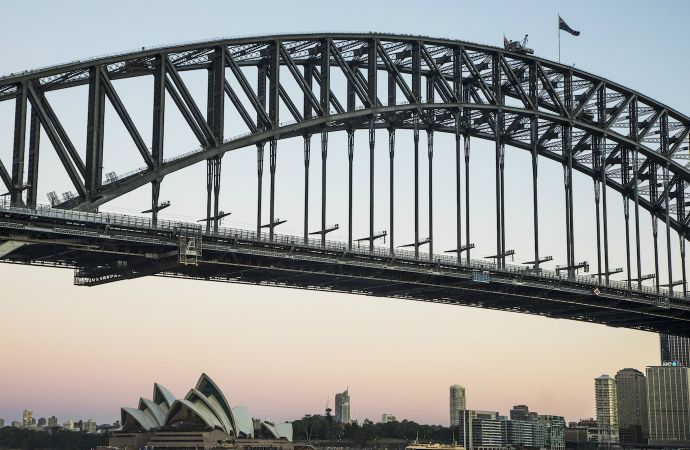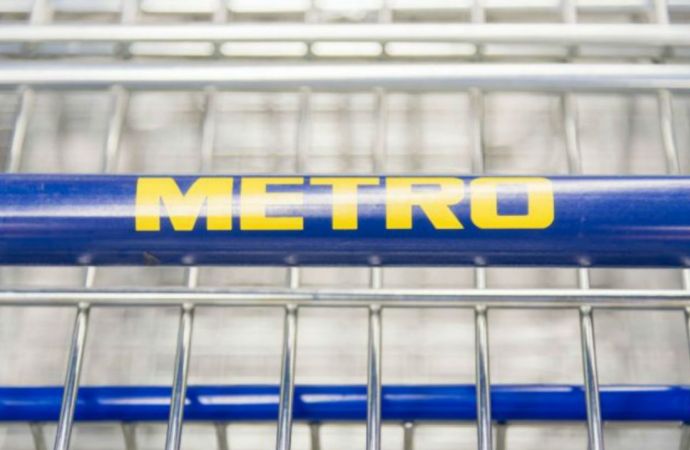The global HFC phasedown is already pushing Australia and New Zealand’s HVAC&R sector away from HFCs, creating market opportunities for natural refrigerants, heard participants at ARBS 2018 in Sydney today.

shecco's Caroline Rham was speaking at ARBS 2018 in Sydney today.
The global HFC phasedown is already pushing Australia and New Zealand’s HVAC&R sector away from HFCs towards natural refrigerants, heard participants at ARBS 2018 in Sydney today.
“Legislation is driving the industry away from high-GWP refrigerants,” said Caroline Rham, business development manager for shecco (publisher of this website) in Australia and New Zealand.
“This is an opportunity for natural refrigerants,” Rham said.
Australia’s HFC phasedown began on 1 January 2018. The country is aiming to reduce its HFC consumption by 85% by 2036. This will be achieved by gradually reducing the maximum permitted amount of bulk HFC imports.
New Zealand, for its part, is currently considering introducing targets of reducing HFC consumption by 80% and HFC imports to less than 260 kT of CO2e by 2036. Its HFC management regime is currently governed by an emissions trading scheme.
Australian market suited to low-charge NH3
In industrial refrigeration, low-charge ammonia is making inroads into the Australian market, with over 100 systems currently in operation. Rham argued that the potential for further growth is enormous, citing Australia’s estimated 100,000 refrigerated warehouses – “the vast majority of which are using HFC systems and are in need of conversion”.
The subsequent Q&A revealed the depth of feeling over how to define low-charge ammonia, with varied opinions from leading HVAC&R stakeholders in the room revealing that industry is yet to reach a consensus in this regard. During the debate, shecco COO Alvaro De Oña highlighted the company’s efforts to contribute to the debate in an upcoming ‘World Guide to Low Charge Ammonia’.
He suggested this could lead to recommendations to create several categories such as reduced charge low charge and ultra-low charge.
Australia’s uniquely remote landscape and strong agricultural sector are well suited to large-scale industrial plants using ammonia, Rham argued.
Legislation is driving the industry away from high-GWP refrigerants. This is an opportunity for natural refrigerants.”
– Caroline Rham, shecco
Under the spotlight: natural refrigerant trends
“CO2 transcritical is becoming standard in commercial refrigeration globally,” said Rham, adding: “It’s also entering the industrial refrigeration sector, where there is huge potential.”
She presented data from sheccoBase, shecco’s market development arm, indicating that the number of CO2 transcritical supermarkets worldwide is growing rapidly.
Europe currently leads the way with over 14,000 CO2 transcritical stores, while there are 3,100+ in Japan, 340+ in the United States, and 210+ in Canada. New Zealand has 41+ while Australia has 20+ (March 2018 data).
Yet Australia and New Zealand are posting the second and third most impressive growth rates after the United States, said Rham, with the number of CO2 transcritical stores having increased by 400% (Australia) and 356% (New Zealand) from 2015 to February 2018.
“CO2 transcritical has proven to be efficient in Australia’s high ambient temperatures,” said Rham.
Yet currently there are more CO2 transcritical installations in New Zealand than in Australia. “The main reason for fast adoption of CO 2 transcritical in New Zealand is the temperate climate and the emissions trading scheme,” Rham said.
“The cost of CO2 transcritical is expected to fall as the systems become more widespread,” she added.
The main challenges in growing the CO2 transcritical market are the varied climates from state to state, and a lack of technicians with experience of working with natural-refrigerant systems, she said – particularly in the countryside.
Yet this is changing fast. “This year, several new training schemes on natural refrigerants are expected,” Rham said.
By contrast, “HVAC&R industry knowledge is now mature in New Zealand,” she said, explaining that the country’s training landscape is now predominantly practical and onsite.
Hydrocarbons, meanwhile, are a proven solution for light commercial and plug-in commercial refrigeration, where higher charge limits under revised standards could open up new market opportunities, she said.
“Competition between different types of natural refrigerant-based systems is expected to intensify. This will help improve performance and reduce costs,” Rham concluded.
She cited as an example the price of CO2 compressors, which “is already falling”.
The Air Conditioning, Refrigeration and Building Services Exhibition is taking place at the ICC in Sydney's Darling Harbour from 8-10 May.
Related stories




